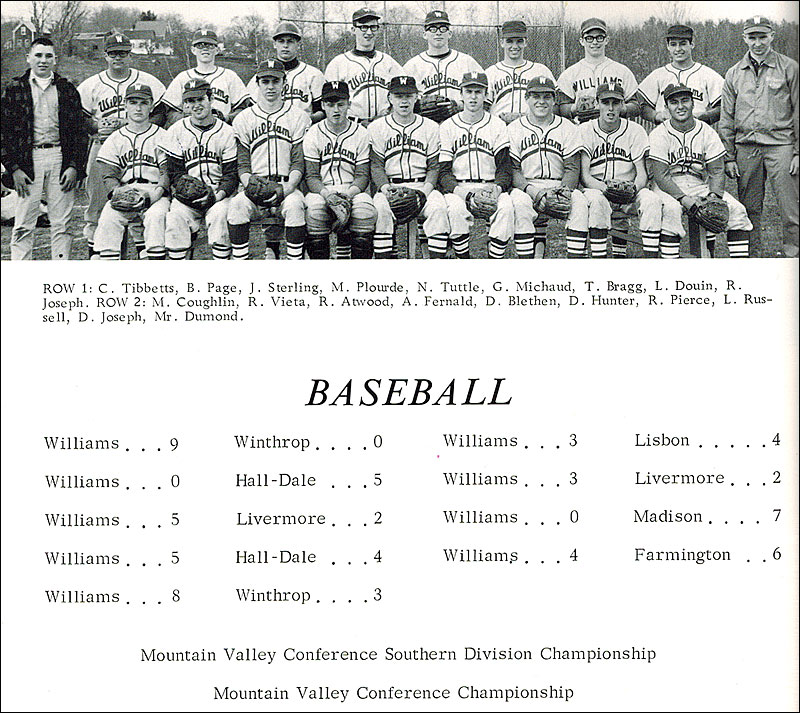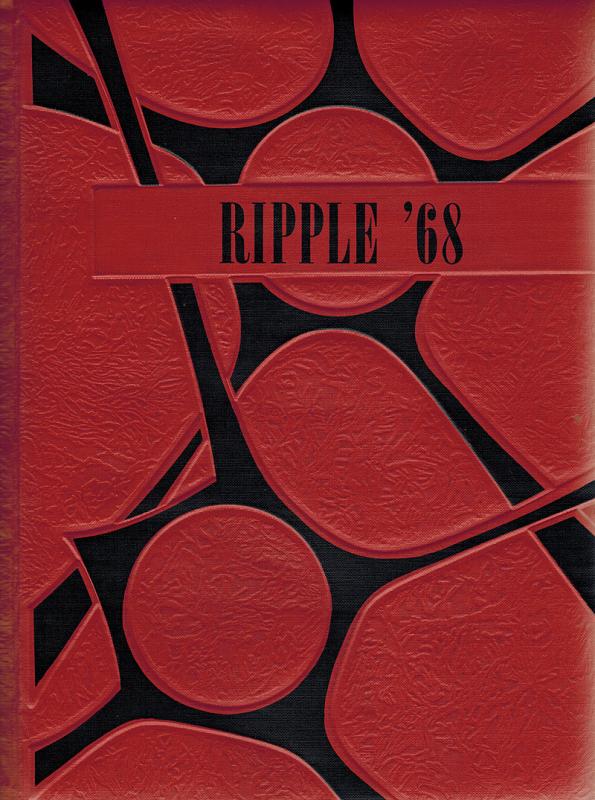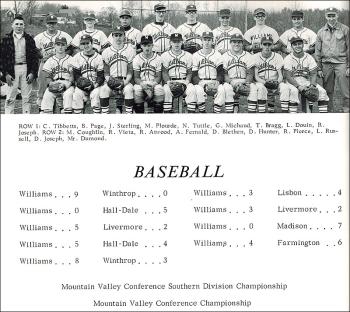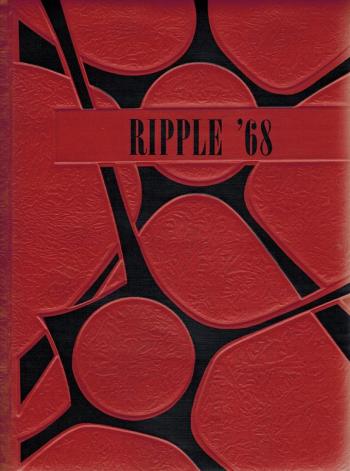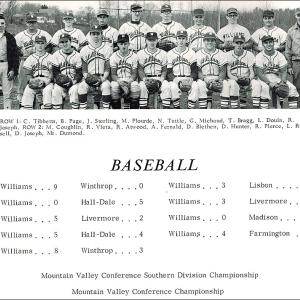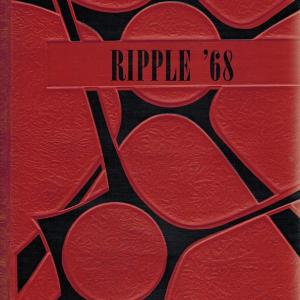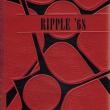Maine high school baseball in the 1960s: It was a different game
The arrival of baseball's Opening Day makes me nostalgic. Before the modern high school baseball era showcasing aluminum bats and public address systems, rural Maine baseball in the 1960s was played on fields that occasionally doubled as cow pastures. Baseball rosters back then were mostly made up of farm kids who used wooden bats, and leather gloves often held together with shoelaces or baling twine. Ball fields with home run fences, batting cages and dugouts were an anomaly when I graduated from Messalonskee High School in 1970.
A dead seagull, stubborn moose and Tommy Bragg's impressive hitting display highlighted my first high school game in 1967 in Oakland. Bragg was our powerful left-handed cleanup hitter. He didn't hit baseballs as much as he punished them, routinely collecting doubles, triples and home runs — sometimes in the same game. Like Babe Ruth, he was a baby faced, barrel-chested man-child. Tommy's strength came from lifting heifers and tossing 50-pound hay bales on his parent's dairy farm in Sidney.
Ten minutes before our home opener, several batting practice balls soared off Tommy's bat and landed in deep center field next to a football goal post, 350-feet from home plate. On his first official swing of the season, Tommy rocketed a ball toward center field. Instead of bouncing on the football field, the ball struck a ring-billed gull in mid-flight. Ball, dead bird and white feathers — in that order — fell in short center field. Both umpires conferred near the mound and awarded Tommy second base, ruling the hit a ground-rule double.
In the top of the third inning, teammates waved at me to come in from left field. I jogged 15 steps closer to shortstop, a position played by my twin brother, Don. The ninth batter must be a weak hitter, I thought, standing 200 feet from home plate. From the pitcher's mound, my brother yelled at me to turn around. A large bull moose, resembling an Appaloosa horse because he was shedding a winter coat, stood behind me in left field grazing on dandelion greens. I sprinted to our bench. The game was suspended for several minutes until coaches and umpires decided that the best way to resume play was for players from both teams to scream while charging left field. The strategy worked; the frightened moose galloped into the woods.
With left field free of moose, Mr. Bickford, the home plate umpire, again shouted, "Play ball!" Each half inning, to quicken the game, the ump greeted passing ballplayers on the infield grass by saying, "Hustle in, hustle out. You can't beat a hustling ball club." Years later I learned that Mr. Bickford moved games along quickly because his shift as night watchman at the nearby Diamond Match toothpick factory started after the final out.
In the 1960s the majority of Maine high school baseball fields lacked fences to prevent moose, livestock and dogs from wandering onto the playing field. At least once each spring a female red fox stole a baseball being retrieved by an outfielder. The vixen deposited the ball in front of her den in an overgrown gravel pit 500 feet from home plate. Bored outfielders, mesmerized by charcoal-colored fox pups playing a hybrid game of soccer and rugby with a baseball, frequently lost track of outs.
Livermore Falls High School was our baseball rival. Its baseball field was located in a floodplain along the Androscoggin River. The visitor's bench was next to a stream that in May produced swarms of black flies. Its location was a decided home field advantage because the bloodthirsty insects feasted on opponents without crossing the diamond to plague the home team. One May, armed with bottles of Old Woodsman's fly dope, our team bus arrived at the Livermore Falls field only to discover that it was flooded after a heavy shower. Rather than postpone the contest, the game was moved to a cow pasture on higher and drier ground. Coach's edict to his outfielders: "Keep the ball in front of you," grew in importance with a large Hereford bull patrolling deep center field.
In the home half of the third inning, I missed a shoestring catch in center field. The baseball ricocheted off a boulder and landed with a plop in a fresh patty of cow manure. With teammates yelling at me to throw the ball to an infielder, I stared at the half-buried ball. Precious seconds eclipsed before I reluctantly tossed it to my twin. He fired the brown and white baseball to home plate to prevent an inside-the-park homer. "Out!" I heard the umpire yell. Heart racing with excitement, I rubbed my dirty right hand on the grass and then instinctively on my gray wool baseball pants. When it was my turn to bat, I made sure that my cleats were caked with cow manure, which was deposited in the batters box by tapping a bat on my shoes. It was my way of protesting the umpire's tight strike zone for our pitcher and a wide one for the home team's pitcher.
Our best pitcher was a boisterous character named Johnny Sawyer. A 5-foot 10-inch Belgrade farm kid who weighed a mere 120 pounds, Johnny's rangy physique belied his baseball skills. He was a crafty left-hander who froze overconfident hitters with a deadly accurate slider and a slow, Major League curve ball. A consummate teammate, Sawyer kept players loose with colorful homespun metaphors. From the on-deck circle, Johnny often called time out to offer advice during a teammate's at bat. "Work a walk," he'd say in a Downeast accent "Their pitcher can't hit the broadside of a barn with a pitch fork." During a tense playoff game, as I approached the batters box, Johnny walked alongside with words of encouragement, "Take him deep and make him weep."
Win or lose, it was always entertaining sitting near Johnny on the team bus returning home from away games. Once when a silver Corvette Stingray raced past our school bus, causing players to gush, "There goes my first car," Johnny tempered everyone's enthusiasm by remarking, "You don't want that car. It passes everything on the road except a gas station."
In 1976, Sawyer's impressive pitching led a University of Maine baseball team to two improbable wins at the College World Series in Omaha, Neb. The southpaw twice struck out Arizona State's Bob Horner, who would go on to become the 1978 National League Rookie of the Year. Sawyer dueled future Chicago White Sox star pitcher Floyd Bannister and 12 other Arizona State players who would later play in the Major leagues. That's an impressive accomplishment for a farm kid from Maine, where a high school baseball season might be limited to six weeks due to snowy ball fields and mud season.
Unlike teammates Johnny and Tommy, I was an average high school ball player who played for the enjoyment of being with friends. Competition was secondary to the game's action and excitement. Having fun was more important to me than winning or losing. High school baseball today is more disciplined and specialized than it was in the 1960s. Back then, the toughest decision fielders faced was who would retrieve a foul ball in a poison ivy patch. Baseball lost much of its innocence when unsupervised sandlot baseball, governed by spontaneous playful youngsters, was replaced by adult-led structured youth baseball. Sadly, most high school hitters today have never felt or heard a baseball explode off a wooden bat, a truism as incomprehensible as never tasting a homemade apple pie.
Ron Joseph is a retired Maine wildlife biologist who grew up in central Maine. He now lives in Camden.
Event Date
Address
United States

